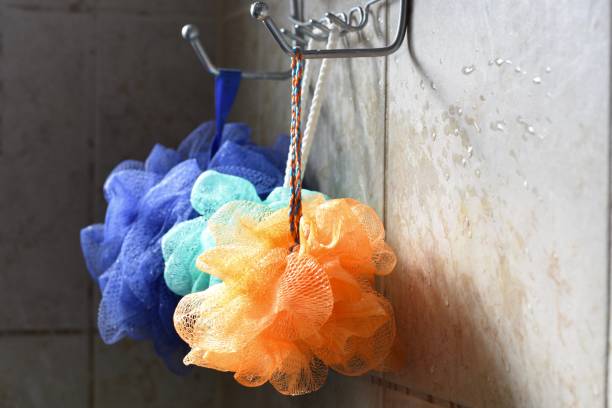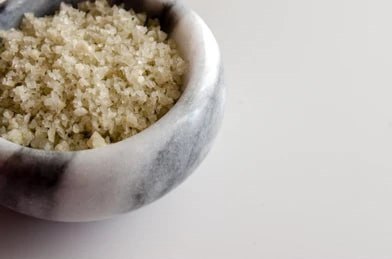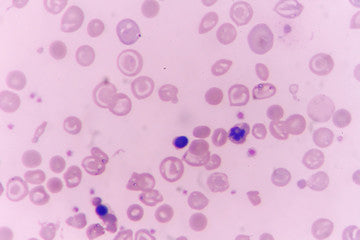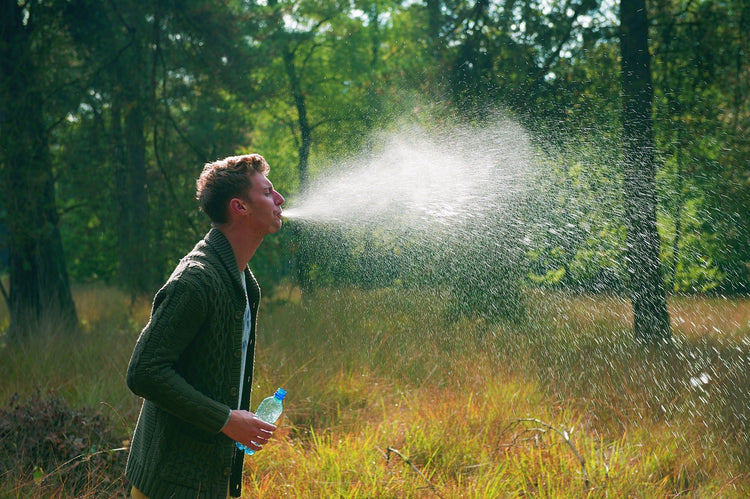Loofah: What to Know Before Using One?

Related products
Loofah, a commonly found accessory in bathrooms worldwide, is often lauded for its exfoliating and skin-softening benefits. Originating from the Luffa Aegyptiaca plant's fruit, a tropical vine-bearing species, these natural sponge-like tools aid significantly in personal hygiene practices by scrubbing off dead skin cells.
Often touted as an integral part of skincare routines worldwide, loofahs have earned recognition for their efficacy in removing dirt buildup and excess oil. Beyond this primary purpose, they serve other roles, including promoting blood circulation through gentle massage on the body's surface, thereby enhancing overall skin health.
Despite these seemingly beneficial aspects associated with using a loofah regularly, medical experts say it does come with implicit risks that call for cautionary usage. Thus, before reaping any reputed advantages attributed to routine utilization, one must remain informed about appropriate cleaning methods to extend product longevity while mitigating harmful implications related to health jeopardization or infection transmission occurring due to frequent moist conditions present within bathing areas facilitating microorganism proliferation amongst household items such as bath sponges exemplified hereinabove under discussion subject-matter being common everyday entities utilized during individual daily ablutions rituals.
Henceforth, considering everything into perspective - thorough comprehension regarding foundational knowledge governing practical incorporation merits/demerits, each pertaining specifically unto singular, distinctive characteristic attributes individually alike purported advantage/benefit claim thereof versus alternatively concurrent contrasting disfavoring opinions expressed within respective circumstances attributable therein.
What is Loofah and Its Uses?

Loofah, often called a sponge, is the interior portion of ripe fruit from species within the Luffa aegyptiaca and Luffa Acutangula plants. Once harvested and left to dry out in the sun, seeds are removed, after which they transform into a network of fibrous material suitable for various purposes, including but not limited to personal hygiene practices.
Exfoliation: The primary use of loofahs involves exfoliating dead skin cells present on human epidermis layers during bathing rituals, thereby revealing fresh, softer tissues underneath. This promotes overall revitalization and appearance sustainment alongside aiding natural organic components renewal processes, hence benefiting enormously users' regular skin care regimes and deeply rooted cultural norms worldwide.
Blood Circulation: Loofahs aid blood circulation by stimulating the process through massaging actions exerted onto body surface areas, resulting in subdued positive effects inferable from activated physiological reactions attributable thereto, primarily increased capillary function activation, subsequently leading to beneficially impacted healing properties accrual cumulatively over time periods spanned thereof.
Kitchen Scrub: Beyond bathroom usage scenario instances; finding applicability extendibility equally inside kitchen environments marked effectively functioning abrasive utensil cleaning objects purpose suitability exemplification imbibing continued reusability advantages provision factors embedded therein as comparative disposal alternatives available elsewhere routinely replaced following short-term recurring utility cycles completions generally practiced commonly throughout residences mostly everywhere across geographical globally spanning locations scattered expansively inhabited populated regions distributed concentration density-wise statistically recorded estimates presentations updated annually.
Home Decor And Craft Projects: Art enthusiasts and creative minds often repurpose discarded loofahs into imaginative craftwork pieces. Transformed into unique home decorations or artistic expressions, these creations are aesthetically pleasing additions to indoor or outdoor spaces. The wide recognition and appreciation for such inventive endeavors typically extend beyond personal satisfaction, providing an opportunity for conversation at social gatherings among friends and acquaintances.
Soil Free Gardening: Sustainability advocates recommend old loofahs' purpose repurposing as an eco-friendly alternative indoors. Plant cultivation technique aids root growth support structure using a biodegradable substance that decomposes naturally without causing detrimental environmental impact overall, successfully reducing waste generation volumes collectively, hence contributing favorably towards current ongoing global climate change mitigation initiatives worldwide efforts directed.
Foot Calluses Removal: A practical use includes treating foot calluses commonly faced by older individuals due to excessive walking or standing issues mainly attributable to advancing age factors.
How are Loofahs Made
Loofahs are crafted from the fruit of Luffa plants, which belong to the cucumber family. The process involves several stages.
The first step entails cultivating and picking ripe luffa fruits directly from their vines, usually after 150-200 days of growth in warm or subtropical climates.
Following harvesting, each green fruit is dried out by removing its seeds and leaving them in a well-ventilated area for weeks until completely dry. This crucial stage determines the texture of your future bathing tool as brittle brown shells replace vibrant green exteriors.
After drying out fully, soaking these arid husks in water aids shell removal, revealing a distinct sponge form underneath that is devoid of any remnants of the former external husk. After that, thorough rinsing helps wash away lingering debris, ensuring only the purest form emerges primed for end-user application.
Sterilization follows next, where boiling-soaked, freshly rinsed members discard potentially harmful bacteria lurking within. It's time to bleach specimens altogether, elevating appeal and transforming previously discolored items into the eye-catching lighter hue everyone knows and loves.
The sterilization phase is the foundation upon which size determination occurs, followed by cutting into ideal sizes. To finalize production, string threading ensures the loofah's easy hanging functionality inside bathrooms.
Simple yet effective steps convert ordinary tropical plants into extraordinary daily-use bath accessories with remarkable exfoliating capabilities, fostering healthier glowing skin.
Risks Associated with Loofah

Despite the many uses of loofahs, several risks necessitate mindful and cautious usage.
Bacterial Infections: Loofah sponges tend to harbor bacteria because of their porous nature and the moist environment they're usually stored in - a perfect breeding ground for harmful pathogens.
Skin Irritation: Overuse or harsh scrubbing can irritate the skin, causing redness, inflammation, or even microscopic tears, making it vulnerable to infections.
Allergic Reactions: Certain individuals might encounter allergic reactions due to the natural fibers within a loofah. Such reactions could lead to skin rashes, particularly on sensitive skin. Therefore, initial precautionary measures and testing are encouraged prior to regular use of a loofah to avoid any undesired side effects or discomforts that may cause harm or distress.
How to Clean Loofah
Cleaning a loofah requires an uncomplicated but essential process to maintain its hygiene and prolong usability. Here is the definitive guide on how to effectively clean your loofah:
- Rinse thoroughly: After every use, rinse your loofah using warm water until it's soap-free.
- Soak in bleach solution: Each week, submerge the loofa in a mixture of 5% bleach and 95% water for approximately five minutes—enough time for bacteria elimination while avoiding the decomposition of sponge material.
- Repeat rinsing under warm running tap water post-soaking, to ensure the removal of any residual bleach.
- Deep cleanse once per month with vinegar: To combat mold or mildew, soak it in equal parts white vinegar and hot (not boiling) water for one hour at least monthly.
- Clean individual fibers manually might require a small brush to gently dislodge stuck particles after soaking
- Air drying completely crucially prevents the growth of microorganisms. Dry places with plenty of air circulation, ideally outdoors sunshine, offer additional sanitizing UV rays. Avoid storing damp places that breed bacteria. Instead, hang up freely to ensure all sides have adequate exposure to circulating air, facilitating full drying.
The cleaning maintenance routine keeps the scrubber fresh and non-contaminated, resulting in a healthier skin exfoliation experience. Regular hygienic care extends life, serving a dual role in sustainable lifestyle practice and cost-saving measures. Remember to dispose of them when worn out and replace new ones. Continue to enjoy spectacular shower experiences.
How Often Should You Replace a Loofah

Replacing a loofah is necessary for maintaining personal hygiene. Dermatology experts recommend replacing natural loofahs every three to four weeks, while plastic mesh puff-style loofahs last slightly longer and typically need replacement after eight weeks.
The rationale behind such frequency relates directly to the inherent structure of these scrubbing tools. Their porous nature makes them prime spots for bacteria and fungi accumulation over time, especially when left in damp environments common within bathrooms.
Continued use of an overly worn or contaminated bath sponge risks introducing harmful microorganisms to one's skin, leading to unwanted irritation and infections.
Therefore, regular inspection is crucial. Early signs necessitating immediate replacement include a color, smell, and texture change. Noticeable hardening, softening, washing, strong odors, and discoloration point toward an overdue exchange.
Keep in mind even with diligent cleaning care, a bacteria-free guarantee remains elusive owing to a complex creviced surface. Every wash-rinse dry cycle gradually deteriorates integrity, reducing effectiveness and eventually rendering unfit usage. Hence, adhere to the recommended time frame to maintain optimum cleanliness and safeguard health.
Alternatives to Loofah
Alternatives to loofah exist in various forms, offering unique benefits and suiting differing personal preferences.
- Washcloth: A common alternative is the traditional cotton washcloth. Softer than a loofah, it provides gentle cleaning suitable for all skin types, including sensitive ones. Besides being machine-washable and making maintenance simpler, these items are easily replaceable, ensuring constant hygienic conditions.
- Silicone bath scrubber: This option has gained popularity because silicone's non-porous structure allows it to resist bacterial growth better than natural or synthetic sponges. It is invigorating while bathing without harboring bacteria, as seen in conventional sponge materials.
- Sea Sponge: Sea sponges emerge as another organic choice. They offer great absorbency and tender exfoliation and give a luxurious lather formation when used in soap. These marine products undergo careful processing before hitting the market to get rid of ocean residue, making them safe, sanitary user applications.
- Konjac Sponge: Made from the root of the Konjac plant, they're 100% biodegradable and hence eco-friendly. Its unique texture makes it exceptional at unclogging pores and gently removing dead skin cells, aiding circulation. More is ideal for those with acne-prone sensitive skin since konjac is inherently rich in vitamins and minerals that nourish your complexion.
- Exfoliating gloves: Consider investing in these innovative accessories for more controlled pressure distribution during body scrubbing. Wear regular gloves following normal washing motions. Their enhanced practicality allows optimal reach all over body parts and facilitates uniform, thorough exfoliation.
Bottomline
Loofah, derived from the Luffa Aegyptiaca and Luffa Acutangula plants, serves multiple purposes. Globally used for skin care due to its exfoliation benefits during bathing and circulation-boosting properties with gentle massage. Its utility extends beyond personal hygiene into kitchen cleaning solutions or unique décor pieces. Potential risks include bacterial infections due to damp environments that promote microbial growth on loofahs and possible skin irritations caused by overuse or aggression in scrubbing practices.
Frequently Asked Questions
What to do before using a loofah?
Before using a loofah, ensure it's thoroughly clean. Rinse with hot water and soak in vinegar to kill any residing bacteria.
What are the top 3 loofah mistakes?
The top three loofah mistakes include not replacing it often enough (it needs to be replaced every four weeks), failing to let it dry out completely, which fosters bacterial growth, and being excessively rough during scrubbing, which leads to skin irritation.
How do l choose a good loofah?
To choose a good loofah, look for one that feels firm but not overly hard. The color should be consistent without noticeable dark spots or discolorations hinting at mold presence.
How do you prepare a loofah for use?
Preparing the loofah involves soaking new ones before their first use, making them softer. Always squeeze out excess moisture after each use, promoting drying and reducing the chances of bacterial growth.
What is the disadvantage of loofah?
One of the most significant drawbacks of Loofa is its potential as a breeding ground for harmful microbes if improperly maintained or left damp, which increases infection risks.
Why do dermatologists not use loofahs?
Dermatologists usually do not recommend using Loofas due to their ability to harbor potentially damaging bacteria. This is especially true when they are stored inadequately or used excessively. This can cause deep skin abrasions, thus escalating the risk factors associated with infections.










 Rated Excellent by 26,523+ Reviews
Rated Excellent by 26,523+ Reviews